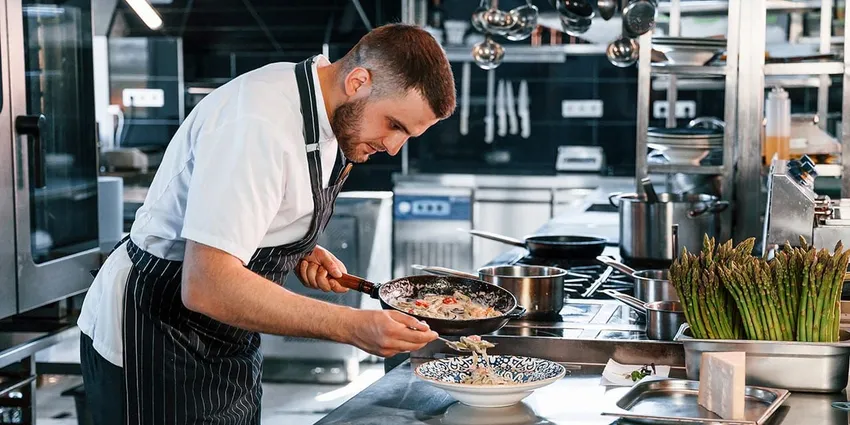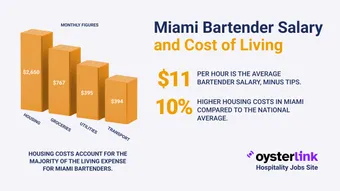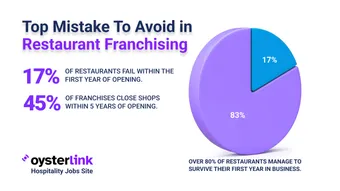Chef Inspiration: 3 Key Takeaways
- 75% of Chefs we interviewed say that travel is essential to staying creatively inspired, exposing them to new ingredients, and cooking styles.
- 3 Chefs emphasized the importance of learning from others, as a way to keep ideas fresh and perspective sharp.
- One mistake in the kitchen can lead to a major creative breakthrough, as shown by Chefs who now credit their growth to early failures.
Chef inspiration doesn’t come from thin air—it’s built through travel, mistakes, mentorship, and creativity.
Whether you're just starting out or leading a kitchen, staying inspired is key to keeping your passion alive and your dishes evolving.
We spoke to chefs from around the world to bring you their best tips on how to stay motivated, curious, and constantly improving.
9 Ways Chefs Stay Inspired and Fuel Culinary Creativity
We’ve interviewed some of the best Chefs in and out of the United States to find out how they manifest inspiration in their own culinary creations.
From going on international vacations to learning from fellow Chefs, they offer the steps on how you can stay inspired as a Chef below.
1. Go Out There and Travel
“Travel! It’s essential. I can’t imagine a great Chef who hasn’t explored the world.
Immersing yourself in different cultures, experiencing their flavors firsthand – that’s the key to truly innovative dishes.”
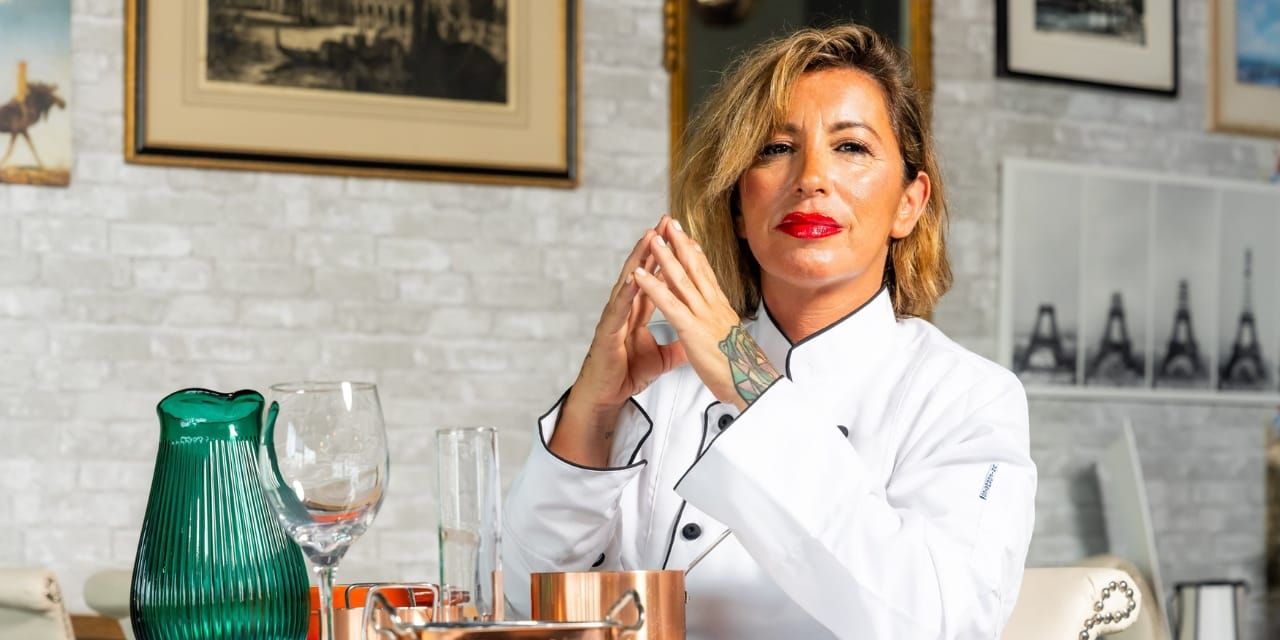
Image courtesy of Olivia Ostrow
Chef Olivia Ostrow, owner of Ostrow Brasserie, has made it a point to explore flavors and cuisines from all over the world after she mastered French cuisine.
Her travels allowed her to expand her cooking techniques, even opening a Miami restaurant offering a unique kosher twist to French dishes.
Traveling as a Chef allows you to meet people from different countries and walks of life.
Aside from trying out local dishes, you can also take in the sights, architecture and culture of different countries.
You can then apply these to your cooking and presentation style.
For example, Chef Frant Achatz observes an “avant-garde” approach when he creates signature dishes — including one with apple balloons filled with helium.
Meanwhile, Sushi Chef Nobu Matsuhisa is able to combine Peruvian and Argentinian influences with Japanese cuisine.
All these go to show that new experiences can help shape your specialization, your values and your career as a Chef.
The Influence of Travel on Creativity
Travel is an incredible source of inspiration for chefs, sparking creativity in ways nothing else can.
Exploring new culinary scenes allows you to dive into the flavors, techniques and presentation styles that make each region unique.
- Street Food Adventures: Tasting street food lets chefs experience the heart of local cuisine—from bold spices to creative, time-honored techniques.
- Learning From Locals: Cooking alongside local chefs gives firsthand insight into authentic techniques and cultural culinary traditions.
Travel isn’t just about discovery — it’s about broadening your perspective and bringing authenticity and global influence back to your own kitchen.
2. Study Different Cuisines
“I think it’s crucial to invest time in learning where your ingredients come from, how they’re grown and digging into seasonal changes.
Exposure to different countries’ cuisines and ingredients opens your eyes to stuff you might never have even thought of before, you know?”
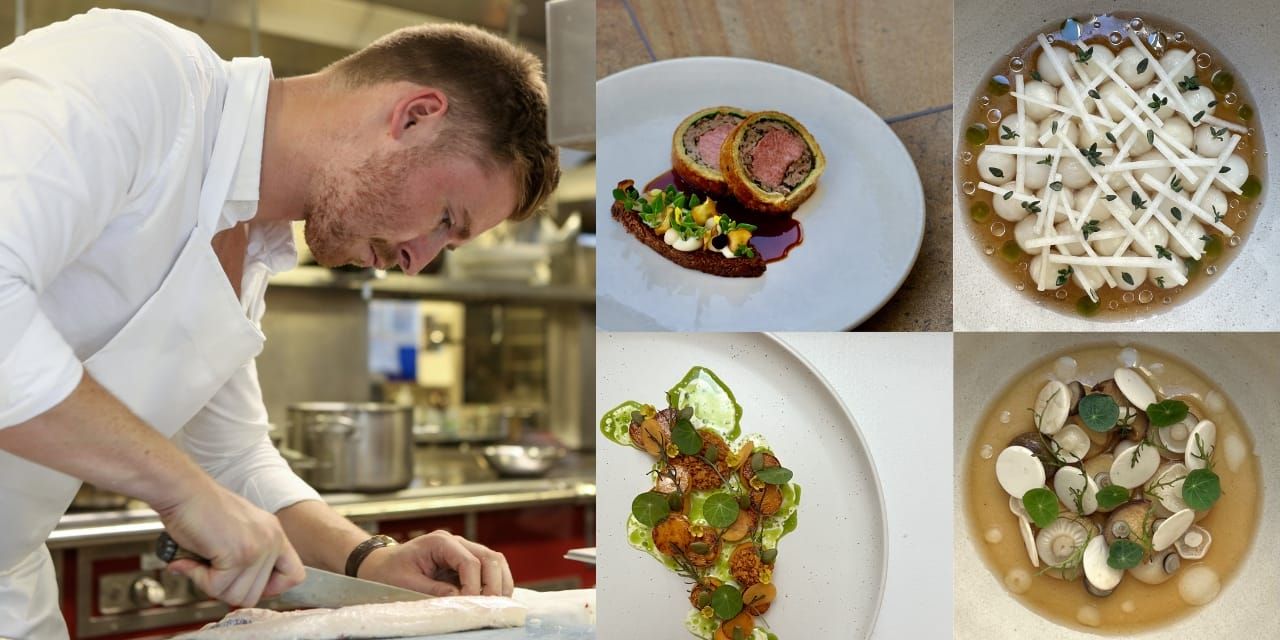
Image courtesy of Scott Braithwaite
To really push boundaries, Chefs often mix unexpected ingredients with more familiar ones to create a perfect mix of balance and excitement.
Imagine pairing something like tropical rambutan with a savory protein — it’s unexpected but can create a flavor combo that just works.
Plus, sourcing from local markets or sustainable suppliers adds flavor, creativity, and a story your diners will connect with.
For example, Sous Chef Scott Braithwaite exercises his creativity through cooking and applying his knowledge of different ingredients and cuisines.
Even though traveling is helpful, not everyone has the time or resources to do so.
You can learn about different ingredients by checking online resources, going to farmers’ markets and checking in with your suppliers.
By knowing these intricacies, you get a foothold on the knowledge of complementary flavors and the history of each dish you make.
Engaging with seasonal and local ingredients can help stimulate your creativity as a Chef.
The map below by Russian plant explorer Nikolai Vanilov shows the origin and primary region of each crop.
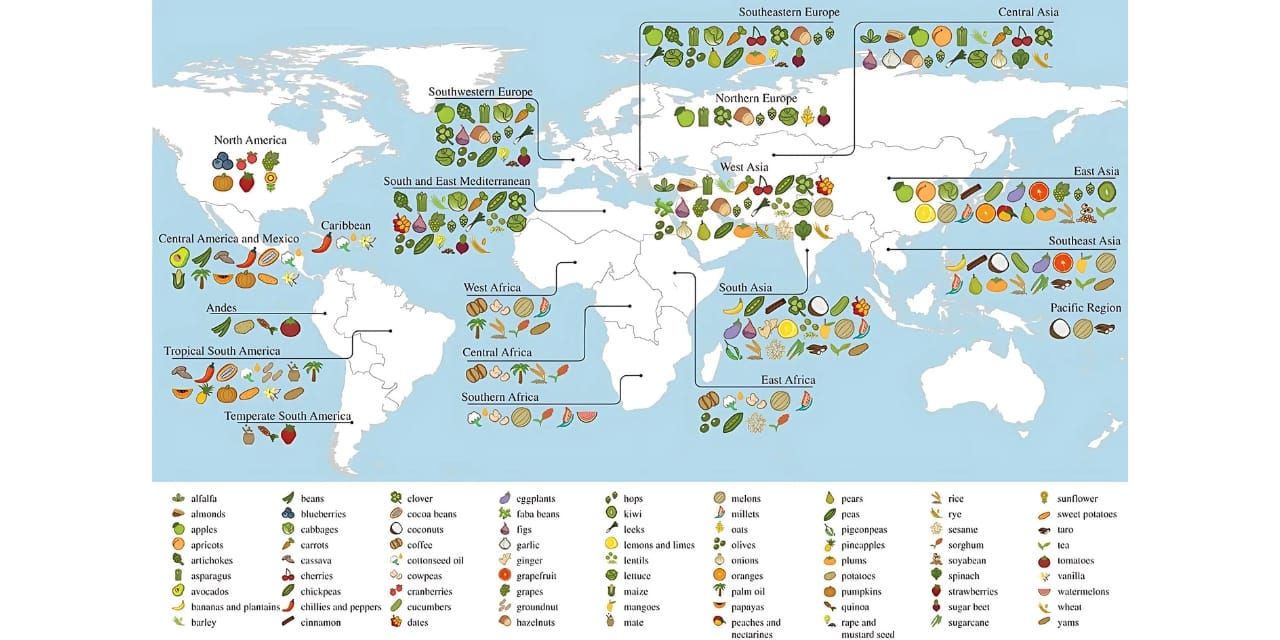
Source: The Royal Society
3. Get Inspired by Other Chefs
“I stay inspired by finding new ideas and dishes, plus watching legendary Chefs.
Setting goals like creating new dishes or working on a new menu keeps me driven…
I have deep respect for every Chef and believe that learning is possible from anyone, including Line Cooks.”
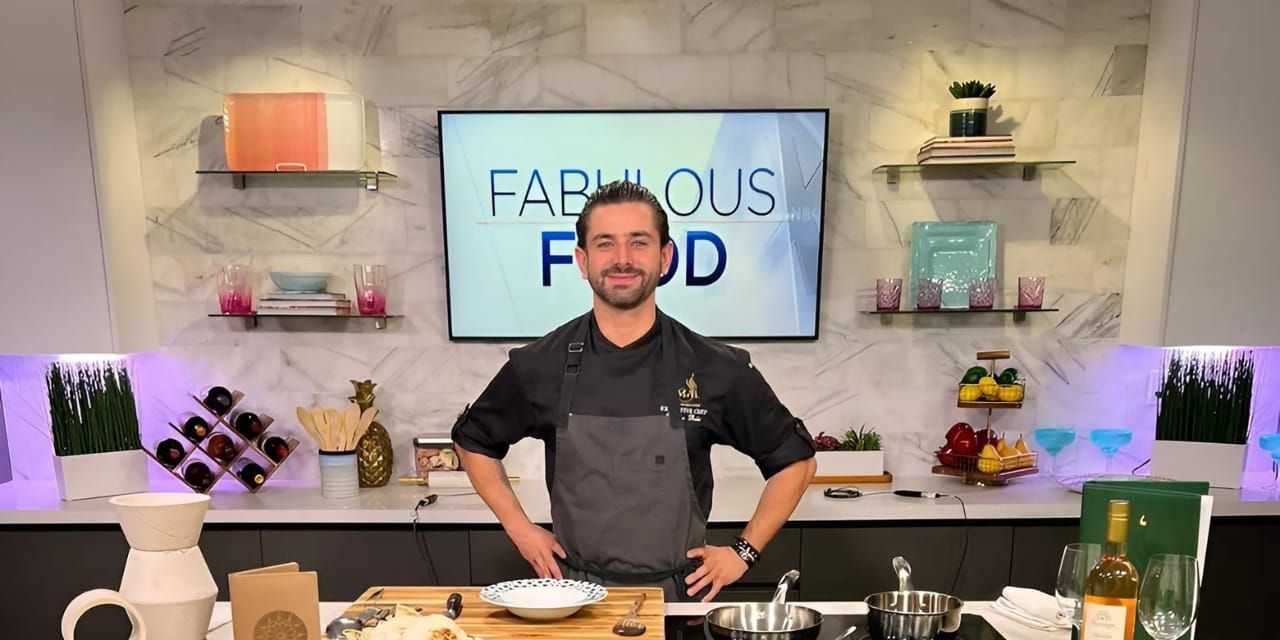
[Source: Wissam Baki’s Instagram]
Despite Executive Chef Wissam Baki’s 15 years of kitchen experience, he continues to learn from other Chefs’ cultures and specialty dishes.
In fact, that’s exactly how the Executive Chef of Amal Miami started: learning from his culinary mentors about Italian, Lebanese and other cuisines.
Learn from your fellow Chefs and anyone else on your kitchen team, such as Prep Cooks or Dishwashers.
Everyone has different influences, family backgrounds and culinary interests.
Engaging with these different ideas can give you a new perspective when it comes to your cooking.
Below is an insight from another culinary expert:
“Don’t stay in the same restaurant forever. Learn from various Chefs, work in different types of restaurants, and find a place that appreciates you.”

Image courtesy of Luca Manfè
For MasterChef season 4 winner Chef Luca Manfè, the only way to progress and stay inspired is to get better every day.
In fact, that mental block for new dishes may be because you’ve exhausted all possible ideas for your niche, and it’s now time for a change.
Make it a point to join culinary workshops, seminars, and industry events—they're amazing opportunities to connect with others in the field and build your network.
Dive into fun, hands-on sessions and engaging conversations with fellow foodies and professionals.
It’s the perfect way to exchange fresh ideas, spark creativity and keep growing as part of a community that’s all about learning, sharing and inspiring one another.
4. Talk To Your Customers
“The best part of my job is making people happy. Seeing the joy in their eyes when they taste my food is priceless.
When customers come back and express their enjoyment, it’s incredibly rewarding. For me, that’s the biggest reward of all.”
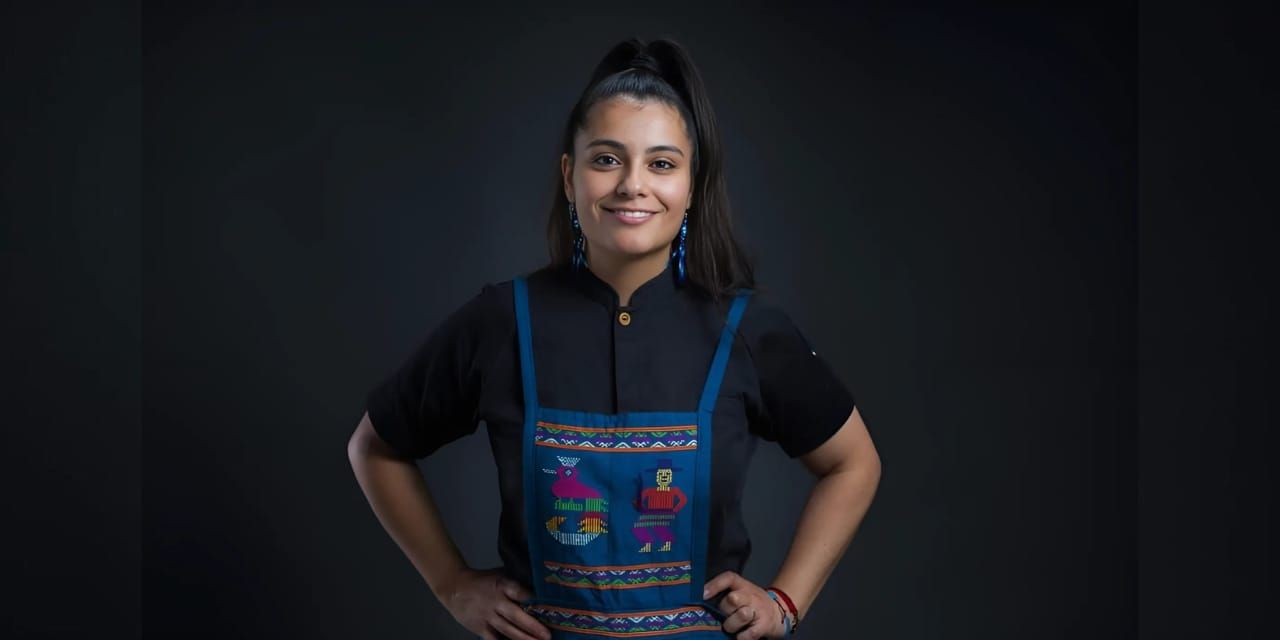
Image courtesy of Carmen Miranda
For MasterChef Mexico winner Chef Carmen Miranda, creating dishes every day that keep customers happy remains her favorite thing to do as a Chef.
At the end of the day, you are a Chef serving your customers.
Regardless of what dish you’re working on, it should pass or exceed your customer’s expectations.
It’s good practice to get out of the kitchen every now and then and chit-chat with your patrons when you can.
This gives you a good glimpse of how people view your food, which dishes stand out to them and any suggestions they may have for your restaurant.
As Chef Wissam puts it:
“I enjoy crafting dishes that people enjoy and connecting with them through my cooking.
I genuinely love interacting with clients and understanding what they like, what they don’t like and why.
The feedback, even the negative type, inspires me to come up with new recipes.”
5. Learn From Your Mistakes
“When it comes to technique and skill, I have made several mistakes.
However, if it [weren’t] for those mistakes, I wouldn’t be able to learn and hone the skills, bringing them to the current level.
Don’t be mistaken, learning is never over in this line of work. I am learning every day.”

[Source: Sharon Pinkhasov's Instagram]
Business owner and Pastry Chef Sharon Pinkhasov tells us about how the mistakes she made early in her career.
This led her to become the Chef she is today – with some restaurant operations management prowess.
Mistakes will be part of your career as a Chef and a lot of the dishes you’re going to put out.
As you become open to learning from failures, you’re able to take more risks with high rewards.
These mistakes can also make room for new ideas and moments of insight.
When you make a mistake, own up to it. Take accountability, learn from it and apply that new knowledge to your next best dish or idea.
Keep in mind that even the brightest Chefs can have the biggest blunders sometimes. We’re all human, after all.
6. Use Online Platforms
In today's digital age, social media platforms like Instagram, Pinterest, and TikTok serve as abundant sources of culinary inspiration.
This allows you to explore global food trends, follow fellow culinary professionals and engage with diverse food communities around the world.
These platforms offer innovative ideas that can spark anyone's creativity!
7. Explore Art and Nature
Many Chefs find inspiration in all kinds of art and the beauty of nature.
Checking out art galleries, catching a performance, or simply spending time outdoors can spark creativity.
The colors, textures and feelings you experience in those moments can inspire unique plating styles, creative flavor combinations and fresh ideas for your dishes.
8. Explore Culinary Traditions
By delving into traditional recipes, regional cuisines, and cultural food practices, you can reinterpret classic dishes with a modern twist.
This approach is great because connects the past to the present, creating dishes that are rich in story and flavor.
For example, you might choose to modernize a centuries-old recipe by incorporating contemporary ingredients or techniques while preserving its historical essence.
9. Incorporate Science
Molecular gastronomy and food science are making waves with Chefs who love to experiment and innovate.
By diving into the science behind ingredients, you can unlock groundbreaking textures and flavor combinations that wow diners.
- Cool Examples: Think using liquid nitrogen to create dramatic frozen textures or mastering sous vide techniques for perfectly precise cooking every time.
- Why It’s Exciting: This approach gives Chefs the tools to rethink traditional methods, break the rules and push culinary boundaries in ways that inspire.
Learn More From Top Chefs: Real Sources of Chef Inspiration
The Chefs above are just a handful of the innovators we’ve had the pleasure of sitting down and chatting with.
At OysterLink, we do everything we can to give you the best career advice straight from expert sources.
Check out our celebrity interviews with the most well-renowned faces in the hospitality industry.
These conversations provide valuable insights into their journeys, challenges and “inspirations” in the culinary world.
You can also check our latest high-paying restaurant and hospitality jobs for culinary careers that pay well across the United States.
Conclusion: Simple Chef Creativity Tips That Make a Big Impact
Inspiration is everywhere — through travel, art, nature, science, and learning from others.
By embracing curiosity and pushing boundaries, you can turn ingredients into stories and meals into experiences.
Stay curious, explore and let your creativity guide you to your next great dish!
